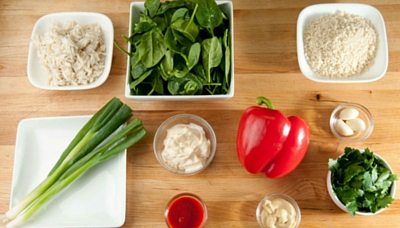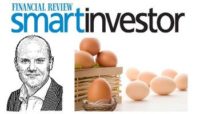The similarities between developing a successful portfolio of investments and creating a successful restaurant dish are, strangely enough, pretty striking.
By independent financial planner Tim Mackay.
It is important to understand how individual investments behave when mixed with other investments, and also your own objectives and risk profile.
Investing is like cooking. Great chefs demand the best ingredients, know what ingredients produce what results, mix ingredients in the right amounts and continually taste and adjust. Creating a successful portfolio is no different.
Master your ingredients
There are four basic investing ingredients (asset classes) in most successful portfolios. Understand what each adds to the mix before you start. Cash and term deposits are the safest defensive asset class. Cash provides liquidity, while a series of rolling term deposits can protect you in volatile times and provide a reasonable yield.
Bonds (fixed income) can be a relatively safe investment providing an adequate yield. You can gain exposure via managed bond funds, bond exchange traded funds (ETF), or bond brokers. Shares are a commonly preferred growth asset class, bought directly on the ASX or indirectly via low cost ETFs or more expensive managed funds. Property is the growth asset class well loved by many Australian investors. This includes investment properties and indirect commercial property via an Australian real estate investment trust.
Know thyself
Next, determine your appetite, and which mix of asset classes will best meet your family’s long-term goals? Ask yourself:
- Are you risk averse or risk tolerant?
- How close are you to retirement?
- Are you seeking to grow your wealth over a longer term?
- How long do you have before your assets need to be turned into cash? ? How do you believe markets will perform medium to long term?
- Your answers will indicate how much risk you should be willing to take. In life, while some people are risk takers (have you ever jumped out of a perfectly good plane?), others are risk adverse. Investing is no different.
The longer your investment timeframe, the more risk you should be willing to take; conversely, if you need a house deposit within 12 months then preserving capital is essential.
If you worry about short-term volatility and take no risks, this could have negative consequences down the track should you outlive your funds (‘longevity risk’).
If you have a negative market outlook, then prepare for the scenario you think most likely and build in some insurance by holding more in cash and defensive assets.
Follow the right recipe
A truly ‘balanced’ portfolio splits 50/50 between defensive and growth assets – eg defensive investments of 5 per cent cash for liquidity, 35 per cent rolling term deposits for security and income and 10 per cent in a bond ETF for some relatively low risk corporate and government exposure.
On the growth side, you could allocate 30 per cent Australian equities, 10 per cent property and 10 per cent international investments. Within your Australian equity exposure, you could add some spice by focusing on blue chips, tax effective high dividend yielding stocks and potentially even some small cap exposure.
If your attitude is more ‘growth’, increase your growth assets weighting; if you have a more ‘conservative’ profile then increase your defensive asset investments.
Just as good chefs adjust their recipes for the season and customer tastes, you should also review your portfolio given prevailing economic conditions, and your own financial circumstances. Long-term asset allocation can be adjusted for short-term volatility.
Regardless of growth and defensive asset split using low cost investments such as ETFs you can construct a customised portfolio quickly and cost effectively with as few as 12 financial products.
Kitchen too hot?
In recent years many new clients, battered by the GFC, have brought to us portfolios comprising 20 to 40 individual investments – some collapsed, some frozen. Many cannot explain how individual investments fit into their portfolio or the overall portfolio strategy.
Trying to buy/sell lots of individual winners and losers over time is the most common approach to investing. However, diversification is not just about having many investments, it’s about understanding how your investments interact with each other to ensure the whole is greater than the sum of the parts.
The pièce de resistance
We liken it to a cook who piles all the best ingredients into the mixing pot. Instead, experienced chefs devise the menu (risk profile) then carefully select the best ingredients (investments) for the perfect meal (portfolio).
Finally, successful chefs continually taste and season, adapt and improve. So too when investing – review your asset allocation over time to ensure your hard earned wealth works optimally for you.
_______________________

Tim Mackay BEc (Hons) MBA CA CFP SSA
I am an independent financial planner, SMSF expert and company director. I thrive on providing independent, expert financial advice to my wonderful clients. With international investment banking experience at Deutsche Bank and UBS in London and New York, I was recognised as SMSF Advisor of the Year by Independent Financial Advisor Magazine.
To contact me, speak to my team on 02 8084 0453. Please feel free to connect with me on LinkedIn or on Twitter. You can also visit the my colleague’s (and sisters) website.








Leave A Comment